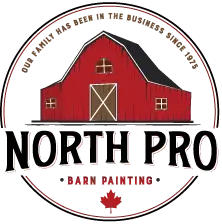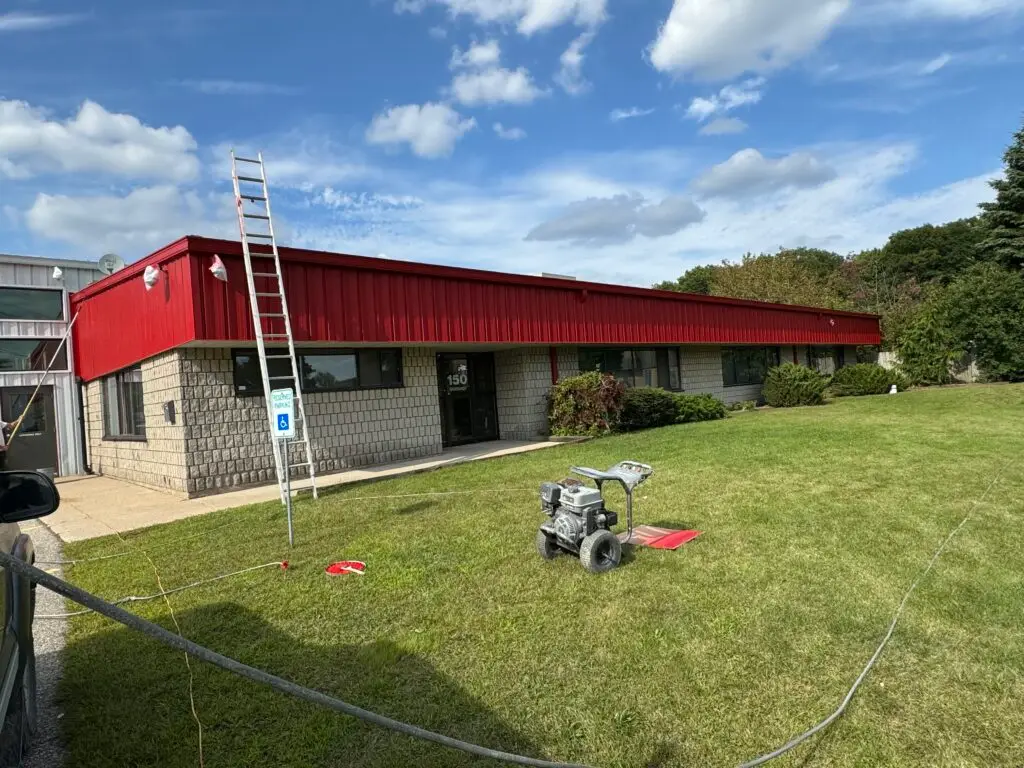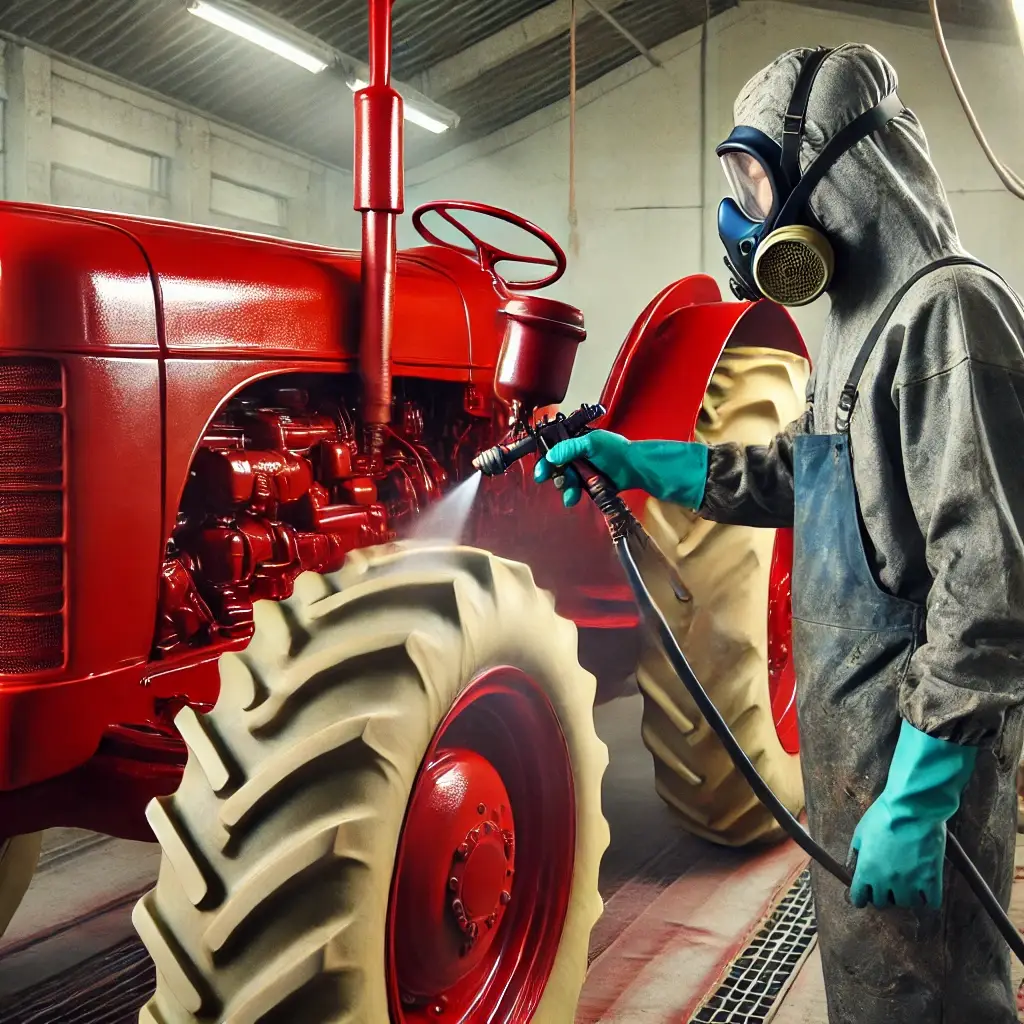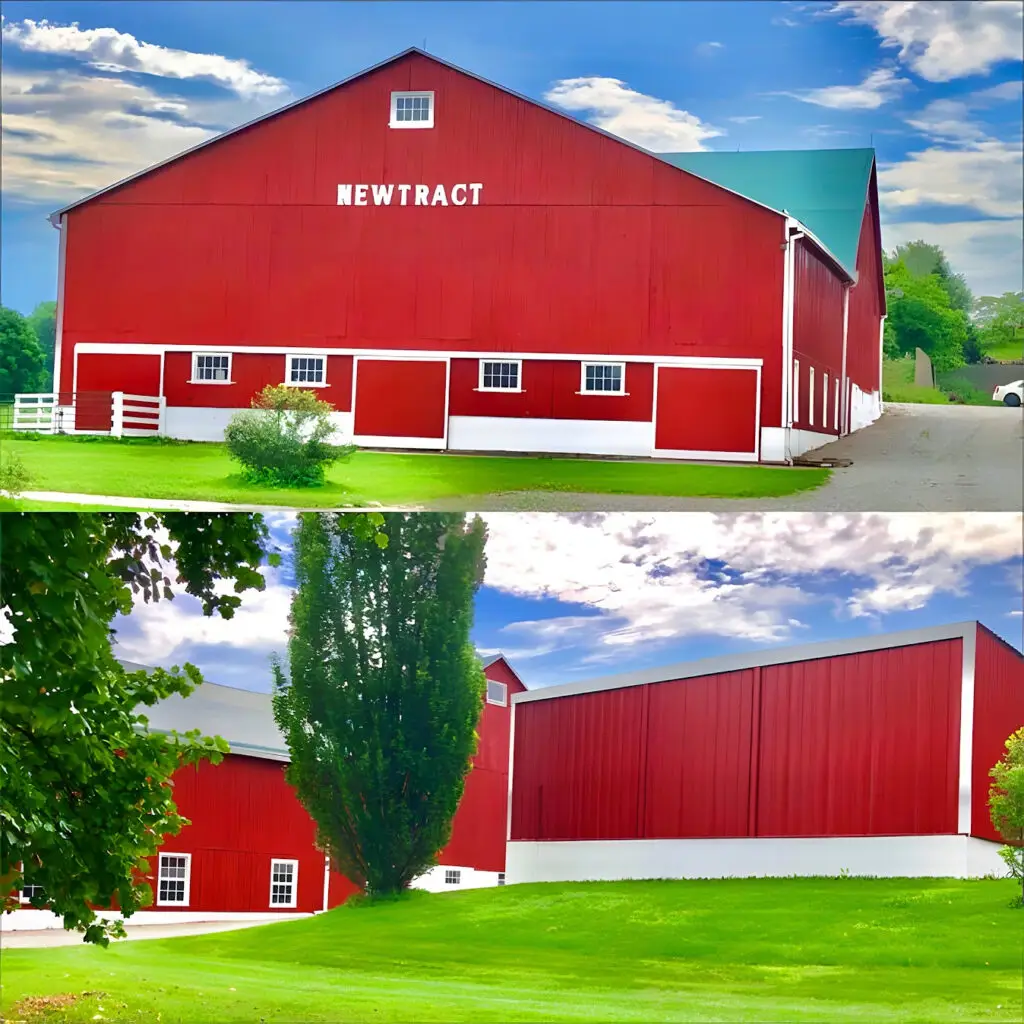Why Proper Barn Painting Technique Matters
A quality barn painting job can last 10-15 years when done correctly, but common mistakes can cut that lifespan in half. In Ontario’s harsh climate, improper painting techniques lead to premature peeling, blistering, and wood deterioration that costs thousands to repair.
This guide reveals the most frequent barn painting errors we see across Ontario farms and how to prevent them for long-lasting results.
Mistake #1: Skipping Proper Surface Preparation
The Problem:
- Painting over dirt, chalky residue, or loose paint
- Failure to remove mildew or wood stains
- Not sanding rough areas or filling cracks
The Consequences:
- Poor paint adhesion
- Bubbling and peeling within months
- Trapped moisture leading to rot
The Solution:
- Pressure wash entire surface (500-3000 PSI)
- Scrape loose paint with putty knives
- Sand rough areas (80-100 grit)
- Apply mildewcide for problem areas
- Allow 2-3 days drying time before painting
Mistake #2: Using the Wrong Paint Type
Common Poor Choices:
- House paint (not durable enough)
- Cheap bargain paints
- Oil-based paints over latex (or vice versa)
- Wrong paint for substrate (wood vs. metal)
Recommended Products:
- 100% acrylic latex for wood
- Industrial alkyd enamel for metal
- Elastomeric coatings for cracked surfaces
- UV-resistant pigments for south-facing walls
Pro Tip: Look for paints specifically formulated for agricultural use with 10+ year warranties.
Mistake #3: Painting in Poor Conditions
Weather Pitfalls:
- Painting when rain is forecast within 48 hours
- Temperatures below 10°C or above 30°C
- High humidity (>70%) causing slow drying
- Direct sunlight on freshly painted surfaces
Ideal Painting Conditions:
- 15-25°C temperatures
- 40-60% humidity
- Overcast days (no direct sun)
- Morning application (allows full day to dry)
Mistake #4: Improper Application Techniques
Application Errors:
- Applying paint too thick (causes cracking)
- Not maintaining a “wet edge” (leaves lap marks)
- Skipping primer on bare wood
- Inadequate coverage (thin spots fail first)
Professional Techniques:
- Use 1/2″ nap rollers for rough surfaces
- Maintain 50% overlap on spray patterns
- Apply two thin coats rather than one thick one
- Follow manufacturer’s recoat times exactly
Mistake #5: Neglecting Maintenance
Common Oversights:
- Not inspecting annually for damage
- Failing to touch up chips/scratches
- Letting vegetation grow against painted surfaces
- Not cleaning surfaces periodically
Proper Maintenance Routine:
- Annual inspection after winter thaw
- Immediate touch-up of any bare spots
- Gentle cleaning with mild detergent
- Trim vegetation 12″ from building
- Re-caulk joints every 3-5 years
When to Call Professionals
Consider hiring barn painting experts when:
- Dealing with lead paint concerns
- Painting extremely weathered surfaces
- Working on tall/hard-to-reach structures
- Wanting premium, long-lasting results
North Pro Barn Painting offers:
- Proper surface preparation
- Commercial-grade materials
- OSHA-compliant safety protocols
- 5-year workmanship warranty
Conclusion
Avoiding these common mistakes can double your paint’s lifespan and prevent costly repairs. By investing in proper preparation, quality materials, and correct application, your barn painting project will provide beautiful, durable protection for years to come.
For flawless barn painting results, contact the professionals at North Pro Barn Painting: 519-400-3067




